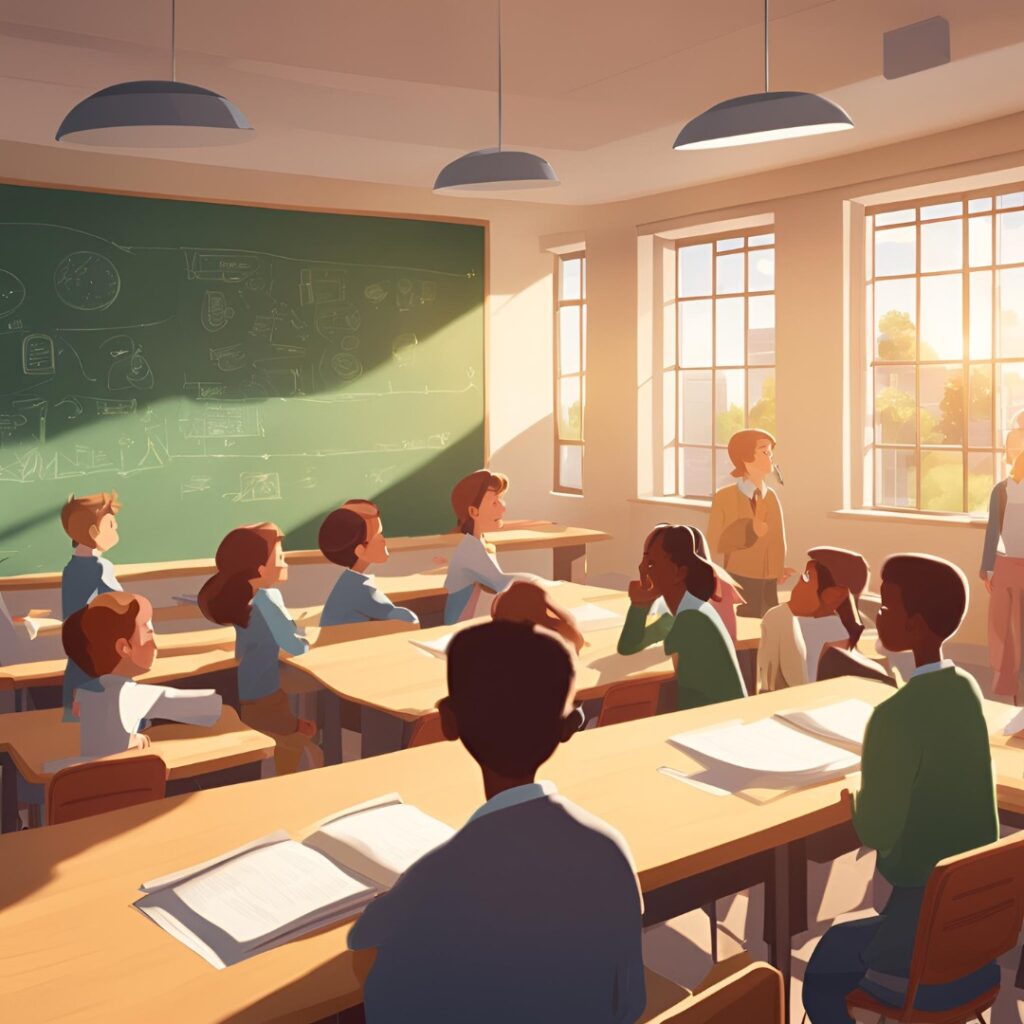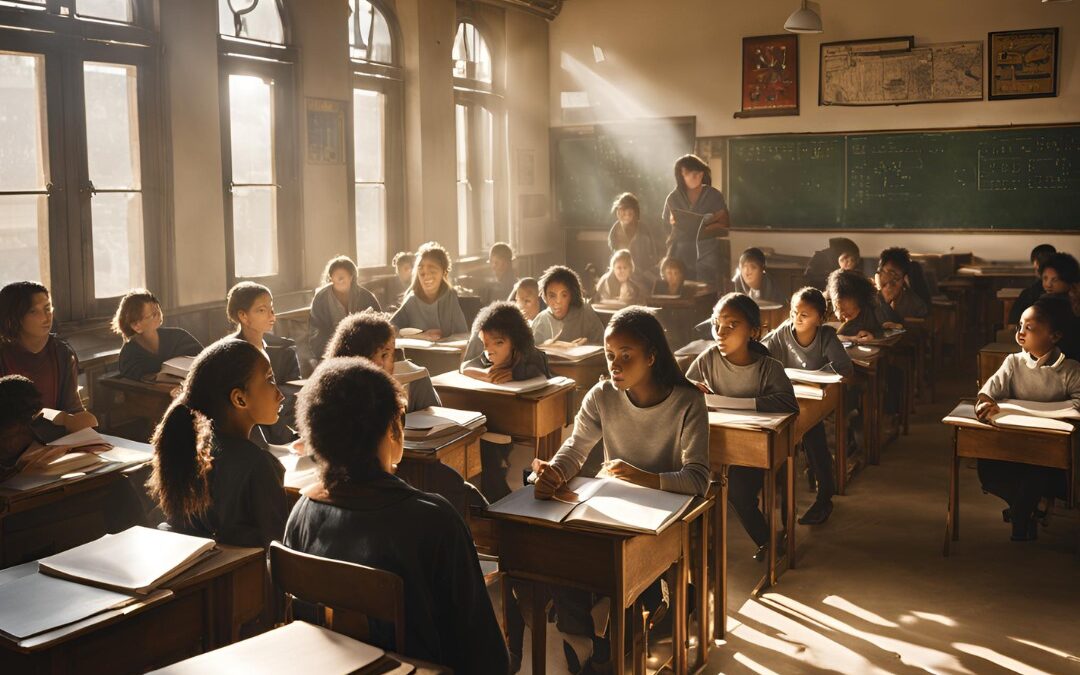Have you ever wondered why private schools often provide a better learning experience for students? In the following two images, we observe a stark contrast between public and private school classrooms, illustrating how private school students tend to receive more personalized attention from their teachers.
The first image illustrates a public school classroom. It’s a large room filled with many students, reflecting the higher student-to-teacher ratio commonly seen in public schools. Because of this ratio, each teacher is responsible for more students, limiting the time and resources available for personalized attention. Despite the hard work of teachers, their ability to focus on individual students is constrained. Those who do not actively seek help or ask questions often to receive limited attention, leading to a lower quality of education for some students.
In contrast, the second image shows a private school classroom. Here, the class size is significantly smaller. Teachers with fewer students are more accessible and can provide more individualized attention. In this setting, students are more likely to thrive, as the lower student-to-teacher ratio allows for tailored instruction and one-on-one interactions. Teachers can easily identify students who are struggling and intervene before they fall behind. This environment fosters success for many students.
These images visually compare the resources and level of personalized attention that can differ greatly between public and private schools.
Can Senior Living Communities Learn from This?

The concept of personalized attention in schools bears a strong resemblance to what we see in senior living communities. Just as in private schools, the ratio of caregivers to residents in assisted living facilities often determines the level of individualized care.
Assisted living communities with higher caregiver-to-resident ratios can offer more personalized care, much like private school classrooms where teachers can better address each student’s needs. In senior living, this translates to more detailed care plans, quicker assistance, and a deeper understanding of each resident’s preferences, quirks, and needs. Higher ratios also benefit caregivers, who have more time with residents and feel like they are making a positive impact. This often results in lower staff turnover and, consequently, a higher quality of care.
On the other hand, large corporate senior living facilities with lower staff-to-resident ratios may spread caregivers too thin, similar to public school classrooms. While care is still provided, it may lack the personalized attention that could enhance a resident’s experience, much like a student in a large class receiving limited one-on-one time with a teacher. Many of these corporate-owned communities focus on aesthetics, such as swimming pools, expensive decorations, and chandeliers, while cutting corners on staffing due to labor costs. Their primary goal is often to deliver a return on investment (ROI) for investors, rather than prioritize individualized care.
In both educational and senior living settings, the level of personalized attention directly impacts outcomes—whether it be academic growth for students or the quality of care and well-being for senior residents.
Conclusion: Choosing the Right Senior Living Community
When looking for a senior living facility for your loved one, keep Lake George Senior Living in mind. We offer industry-leading caregiver-to-resident ratios, which is why we consistently remain full and maintain a waiting list. We have never lost a resident to another facility due to care issues. Remember, when touring senior living communities, a fancy chandelier won’t take care of your loved one—it’s the caregivers who truly make the difference.

